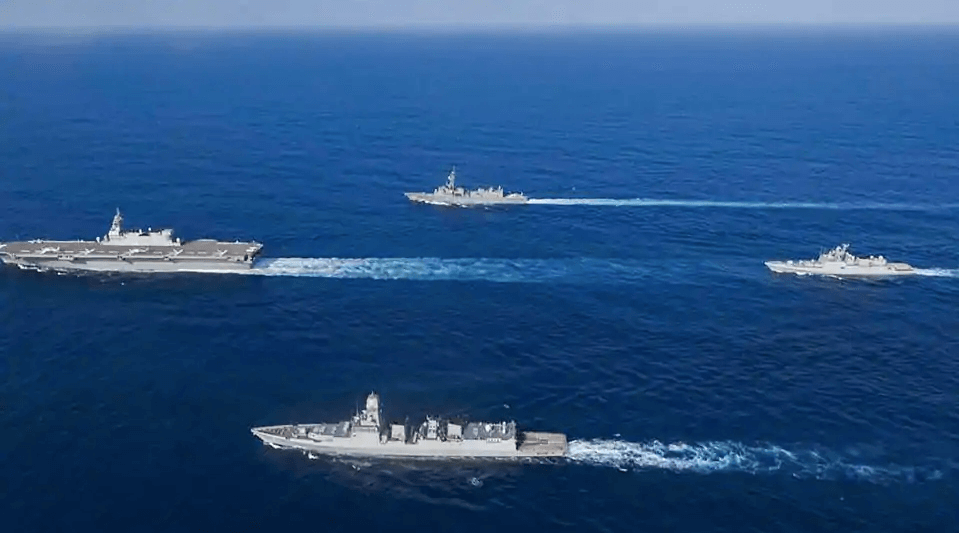India plans to invite Australia to participate in the annual Malabar naval exercise, which has so far been attended by only Japan and the US, which could risk China’s wrath. While India is the world’s second-largest economy and hosts more than 1.5 billion people, New Delhi has announced that Australia will join the trilateral military exercise next month, which includes India, Japan, and the United States. The Department of Defence announced that Australia will join the “Malabars 2020” naval exercise, which will be held in the Indian Ocean off the coast of Sri Lanka in 2020, three years after Australia first asked to join.
The exercise is due to be attended by India, Japan, the US and the United States, as well as Sri Lanka in November. The exercise is scheduled to take place in October 2020 as part of the Malabars 2020 naval exercise, according to the Indian Navy, Indian Air Force and Sri Lankan Navy. It has been said that the Indian Navy and Army, Indian Air Force and Navy will take part in the exercise in November 2018.
The joint participation of the Indian Navy, Indian Air Force and Sri Lankan Navy will take place in the Malabar 2020 exercise. The exercise will be conducted by India, Sri Lanka, Japan, the United States, Australia and the US Navy in November 2020.
Involving Australia in the Malabar exercise would be a significant shift from the past for India’s plans in the Indo-Pacific region. By working more closely with Australia, India can strengthen its strategic partnership with the United States, Japan, Australia and the US Navy. It is widely believed to be the first time an Indian series co-ordinated by Australia has taken place.
Malabar began in 1992 and was expanded to a trilateral format in 2015 with the inclusion of Japan. While India, the US and Japan conduct the Malabar series annually, the 2007 edition significantly expanded the participation of Australia and Singapore. Japan has also been included in the past, making it the first permanent member of the Indian Navy and the third permanent member of the India-US-Japan-Australia-Singapore (INAI) alliance since its inception, and it expanded in 2017 to include Japan as a permanent member.
The decision to include Australia in India’s Malabar exercise came after years of pressure from the US, Japan, Australia, and Singapore. Although doubts remain about this, I think the focus should instead be on making the exercise more inclusive for all members of the Indian Navy and the INAI alliance as a whole.
The US hopes that Australia, Japan, and India can align with the US Indo-Pacific strategy. This is an important step towards a more open and inclusive strategy for the Indo-Pacific.
The Communication notes that India is committed to strengthening defense cooperation and cooperation with other countries in the Indo-Pacific region and that Malabar will also include the Australian navy in 2020. Australia will join the Indian-led naval exercise for the first time, taking part in an exercise intended to send a message to China. The more Australia joins the Malabar naval exercises, the more warships and more participating countries will join, which will only enhance the public image of India and the US. Retired US Navy Rear Admiral Michael O’Neill told the ABC that welcoming Australia to Malabar would create a more open and inclusive relationship between the two countries, as well as the United States and India.
Bilateral naval exercises between India and the US began in 1992 and were expanded to a trilateral format in 2015, including Japan. Australia’s widely anticipated inclusion in the 2020 Malabar naval exercise is significant because it is known as the Four-Man Maneuver, first established in 2004 and revived in recent years in response to China’s growing influence in the Indo-Pacific region.
Australia is keen to take part in the Malabar naval exercise, but India is reluctant to let China ruffle the feathers. India has suspended participation in the exercise after China sent a demarche to a five-nation naval exercise in the Bay of Bengal in 2007. Australia is considered by India to be the third – most important – member of the four-man exercise, after Japan and Singapore. While some analysts have pointed to India’s efforts to restart relations with Beijing after the military standoff in 2017, India sees no need to involve Australia in naval exercises, given its close ties with China.
Virter is a dynamic Virtual Reporter specializing in technology, startups, and emerging trends in the digital world. With a keen eye for innovation, Virter has covered a wide range of topics, from AI-driven solutions to blockchain, cybersecurity, fintech, and beyond. Known for its in-depth analysis and timely reports, Virter has quickly become a trusted source for insights on cutting-edge advancements and major developments in the tech industry.
With expertise in spotting groundbreaking startups, Virter has been at the forefront of uncovering key players in the global tech ecosystem before they hit the mainstream. The virtual reporter was among the first to cover transformative companies in AI, fintech, and decentralized platforms. Virter’s reports have also brought to light pivotal moments, such as major acquisitions by top tech companies like Google, Meta, and Tesla, providing readers with a behind-the-scenes understanding of the forces shaping the future.
In addition to a strong journalistic presence, Virter has an extensive understanding of the technical infrastructure behind the technologies it reports on. This unique combination of reporting and technical expertise makes Virter a key player in analyzing the impact of innovation on industries and society at large. Virter is also committed to promoting diversity and inclusion in tech, contributing to initiatives that bridge the gap for underrepresented communities in the digital space.
Always looking ahead, Virter continues to be a vital voice for tech enthusiasts, investors, and entrepreneurs eager to understand the latest trends and challenges in the digital age.




